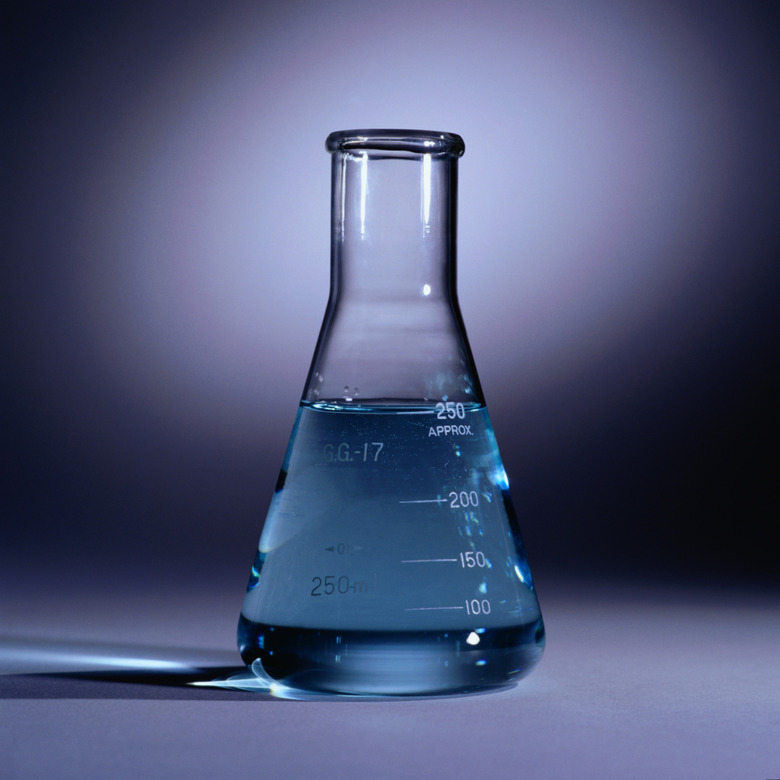Daily Activities That Involve Chemistry
Chemistry can mean a lot of things. At this point, you're probably thinking of it as the study of how substances (atoms and molecules) interact at the most intimate, and usually invisible, level, and something you can even major in and study formally for life. It can also be the unusually "reactive" feelings between two attracted individuals. It could be the class you sit in, next to a person with whom you might even have chemistry.
Wordplay aside, chemistry on the surface looks like an assortment of often randomly tossed together letters and numbers. Of course, you could say the same about any book or website. In fact, the very value of chemistry is its elegant orderliness and predictability (in the right hands, that is, and with safety always in mind).
How do you experience the benefits of chemistry and chemical processes every day? Well, the five below only scratch the surface, but they represent a productive start toward appreciating the daily activities in which this wonderfully structured scientific discipline plays a part.
Respiration Reactions
Respiration Reactions
Respiration is not precisely the act of breathing (that's called ventilation) but is instead the name for the series of chemical reactions that convert glucose (C6H12O6), which is the end product of food digestion all cells use as a nutrient.
In humans and other multicellular organisms, aerobic respiration in the mitochondria of cells results in the production of ATP (adenosine triphosphate), the "energy currency" of cells. Without oxygen (O2), cells can produce a very limited amount of ATP from glucose.
The complete balanced chemical reaction of aerobic respiration is
C6H12O6 + 6 O2 → 6 CO2 + 6 H2O + 36 (or 38) ATP
Glucose is broken down in the presence of oxygen into carbon dioxide and water, liberating energy in the process.
Photosynthesis Reactions
Photosynthesis Reactions
You get glucose from food; plants, lacking mouths, have to make their own, for they need it for aerobic respiration, too, as well as for growth and other metabolic activities. Plants do this by "inhaling" CO2 (conveniently, a waste product of animal metabolism available in bountiful quantities) into their leaves and using the pigment chlorophyll and sunlight to assemble glucose from this CO2:
6 CO2 + 6 H2O → C6H12O6+ 6 O2
As you can see, this is the reverse reaction of aerobic respiration. Consequently, respiration and photosynthesis together make up the carbon cycle.
Oxidation Reactions
Oxidation Reactions
All of that unfortunate flaky, maroon-colored metal riding around on well-weathered automobiles is the result of a kind of reaction known as oxidation. The iron (Fe) atoms in steel and other metals, if exposed to air and moisture, can gradually change into different oxides of iron, resulting in the familiar phenomenon known as rusting.
Common rusting can be summarized by the reaction:
4 Fe2++ O2 + 6 H2O ⟶ 2 Fe2O3⋅H2O + 8 H+
Cooking Reactions
Cooking Reactions
The chemistry of cooking is the stuff of whole textbooks, but in general, cooking that involves browning (as in the baking of bread) occurs best under dry conditions and at temperatures above about 130 ℃. Frying, baking, grilling or roasting tends to brown food via a group of processes called Maillard reactions.
In microwaving, boiling and steaming, internal food temperatures rarely exceed 100 ℃, and any browning is the result of other processes.
Fire Reactions
Fire Reactions
Fire is the result of sudden reactions relying on a set of preconditions: Heat, fuel and oxygen must be present in sufficient amounts. The fuel and oxygen mixture can be optimized to create high combustion rates. When you watch a fire burn, you are enjoying the sight of a series of chain oxidation reactions.
When either fuel or oxygen is removed from the system, the fire will be extinguished quickly for lack of reactants, although in practice this of course can be difficult to rapidly and safely do in the event of unplanned or maliciously set fires.
References
Cite This Article
MLA
Beck, Kevin. "Daily Activities That Involve Chemistry" sciencing.com, https://www.sciencing.com/daily-activities-involve-chemistry-9460/. 27 February 2020.
APA
Beck, Kevin. (2020, February 27). Daily Activities That Involve Chemistry. sciencing.com. Retrieved from https://www.sciencing.com/daily-activities-involve-chemistry-9460/
Chicago
Beck, Kevin. Daily Activities That Involve Chemistry last modified August 30, 2022. https://www.sciencing.com/daily-activities-involve-chemistry-9460/
